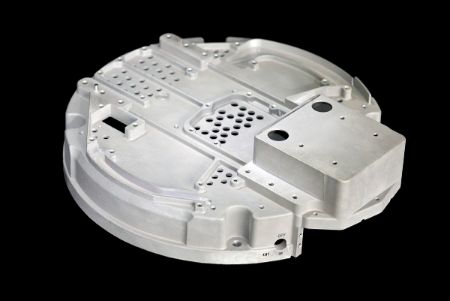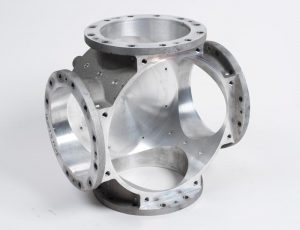Aluminum Casting Explained: Key Truths and Insights for Sector Professionals
Aluminum casting works as an essential process in contemporary production, forming parts throughout different fields. Its diverse methods, such as sand and die casting, satisfy various manufacturing demands. The special residential or commercial properties of aluminum alloys boost their applicability, yet tests remain in maintaining top quality and effectiveness. Understanding these elements is necessary for sector specialists. What are the most recent improvements and ideal techniques that can further enhance this procedure?
Summary of Aluminum Casting Processes

Crucial element of aluminum casting processes include the preparation of mold and mildews, which may be made from sand, metal, or ceramic materials, depending on the intended usage. Additionally, temperature control is crucial to guarantee correct melting and solidification of aluminum.
The casting procedure enables complex designs and can attain high degrees of dimensional accuracy. Once cooled down, the castings might go through completing operations such as machining or surface area treatment to meet certain performance requirements. Overall, aluminum casting works as a functional production technique, effectively fulfilling the diverse needs of numerous sectors.
Kinds Of Aluminum Casting Methods
In the domain name of aluminum casting, various approaches are employed to accomplish different outcomes. Sand casting techniques give flexibility and cost-effectiveness for complex forms, while die casting processes supply high precision and efficiency for mass production. Recognizing these methods is important for selecting the proper strategy based on job demands.
Sand Casting Techniques
Sand casting methods stand for a basic method in aluminum casting, where sand is utilized as a mold product to shape molten steel. This process entails developing a pattern from the wanted part, which is after that positioned in a sand mixture to create a mold and mildew. The sand is compressed around the pattern, and after removal, it creates a dental caries in the shape of the part. Molten aluminum is put right into this cavity, enabling it to cool down and strengthen. One significant advantage of sand casting is its convenience; it can accommodate complex shapes and big parts. In addition, the products made use of are relatively low-cost, making it an easily accessible alternative for various manufacturing applications in the aluminum industry.
Die Casting Processes
Die casting processes are a famous approach for forming aluminum parts, utilizing high-pressure methods to require liquified steel right into specifically crafted mold and mildews. This process is specifically favored for its ability to generate intricate forms with limited resistances and a smooth coating. There are 2 primary types of die casting: hot chamber and chilly chamber. Hot chamber die casting appropriates for metals with low melting points, permitting faster production prices. Alternatively, cool chamber die casting is ideal for greater melting factor metals, calling for a different melting heating system. Both techniques enhance efficiency and lower product waste, making them necessary in vehicle, aerospace, and durable goods industries. Comprehending these processes assists experts choose the most appropriate strategy for their particular applications.
Material Characteristic of Aluminum Alloys

Strength and Longevity
Strength and resilience are important features of aluminum alloys that make them appropriate for different casting applications. These materials show a favorable strength-to-weight ratio, enabling the production of lightweight yet robust elements. With regard to tensile strength, certain aluminum alloys can be crafted to withstand considerable tons without deforming. This property is especially crucial in markets such as aerospace and auto, where efficiency and safety are critical. Furthermore, aluminum alloys typically maintain their mechanical residential or commercial properties under diverse temperature conditions, making sure constant performance. The innate ductility of these alloys likewise permits effective shaping throughout the casting procedure, making it easier to generate intricate geometries. On the whole, the toughness and durability of aluminum alloys add considerably to their prevalent usage in sophisticated applications.
Deterioration Resistance Characteristics
While aluminum alloys are treasured for their stamina and lightweight homes, their corrosion resistance is one more important characteristic that improves their suitability for numerous applications. Aluminum normally develops a protective oxide layer when revealed to wetness, which aids to avoid more oxidation. This fundamental building makes aluminum alloys especially important in environments vulnerable to deterioration, such as aquatic and industrial setups. In addition, different alloy compositions can influence resistance degrees, with specific alloys specifically engineered to boost this particular. Therapies like plating can additionally enhance corrosion resistance by thickening the oxide layer. As a result, comprehending the deterioration resistance of aluminum alloys is important for market specialists when choosing materials for jobs requiring durability and long life in challenging settings.
Advantages of Aluminum Casting in Production
Aluminum casting deals various benefits in production, making it a favored option for different sectors. One substantial advantage is its lightweight nature, which adds to reduced transportation prices and improved energy effectiveness in final result. Moreover, aluminum's outstanding thermal and electrical conductivity enhances performance in applications calling for warmth my latest blog post dissipation or electrical conduction.
The product's ability to be cast into detailed forms permits design flexibility, lowering the demand for extra machining processes. In addition, aluminum casting displays remarkable rust resistance, leading to longer product lifespans and lower maintenance costs.

Usual Applications of Aluminum Castings
The flexibility of aluminum casting allows its widespread use throughout different sectors. Common applications consist of vehicle components, where lightweight and corrosion-resistant parts, such as engine blocks and transmission real estates, improve vehicle efficiency. In the aerospace industry, aluminum castings are used for architectural components, providing strength without adding considerable weight.
Furthermore, the electric market gain from aluminum spreadings in producing units and warm sinks, where thermal conductivity is crucial. The durable goods industry likewise incorporates aluminum find more castings in products like pots and pans, furniture, and ornamental things, incorporating aesthetic appeals with capability.
Furthermore, the building and construction sector employs aluminum castings for architectural elements, window frames, and fixtures, which offer longevity and layout flexibility. Overall, the varied applications of aluminum spreadings emphasize their relevance in modern-day production, adding to improvements in effectiveness and product design across numerous areas.
Advancements and Technological Developments
As industries continue to advance, technologies in aluminum casting modern technology are changing production procedures and item abilities. Developments in 3D printing and additive manufacturing have actually allowed the creation of intricate geometries that were formerly impossible to achieve with typical approaches. These modern technologies allow for quick prototyping, minimizing lead times and prices.
Additionally, improvements in mold and mildew design and products have boosted the casting process by raising effectiveness and reducing waste. The combination of wise manufacturing techniques, such as IoT devices and real-time information analytics, allows for far better surveillance and optimization of manufacturing parameters, causing better outputs.
Developments in aluminum alloys supply boosted strength, rust resistance, and light-weight homes, providing to the growing demands in aerospace and automotive markets. Jointly, these innovations are not only improving efficiency yet likewise fulfilling the strenuous standards of contemporary engineering applications.
Finest Practices for Top Quality Control in Aluminum Casting
Ensuring top quality outputs in aluminum casting requires adherence to ideal methods that include numerous phases of the manufacturing procedure. Extensive product assessment is crucial to validate the quality of aluminum alloys used, as impurities can greatly influence the last item. Carrying out exact melting and putting methods lessens flaws; preserving optimal temperatures protects against oxidation and advertises harmony.
Additionally, mold and mildew style plays an important function; utilizing computer-aided design (CAD) can enhance accuracy and reduce human error. Routine surveillance of the cooling process is critical to avoid warping and contraction. Furthermore, utilizing non-destructive screening approaches, such as ultrasonic or X-ray assessments, aids identify internal problems without harming the elements.
Finally, developing a comments loophole with operators and designers fosters continuous renovation, making sure that quality control measures advance together with technical improvements. By following these finest practices, suppliers can improve the dependability and efficiency of aluminum castings.
Frequently Asked Concerns
What Are the Ecological Influences of Aluminum Casting?
The environmental impacts of aluminum casting include considerable power intake, greenhouse gas exhausts, and prospective water contamination from factory operations. In addition, bauxite mining for aluminum ore can result in environment destruction and soil degradation.
How Does Aluminum Casting Compare to Other Metal Casting Procedures?
Aluminum casting generally supplies advantages in lightweight parts and rust resistance contrasted to various other processes, such as iron or steel casting, which might offer higher strength however lead to much heavier and much less corrosion-resistant products. - Precision aluminum casting
What Prevail Problems in Aluminum Castings and Their Causes?
Common defects in aluminum castings consist of porosity, contraction, and incorporations. Reasons usually stem from improper pouring techniques, inadequate mold design, or contamination of the molten metal, impacting the final product's honesty and efficiency.
What Safety Precautions Should Be Taken During Aluminum Casting?
During aluminum casting, important safety preventative measures consist of using protective gear, ensuring proper air flow, keeping a tidy work area, dealing with molten metal with care, and following established methods to decrease dangers of burns, inhalation threats, and mishaps.
Exactly How Can I Enhance the Performance of My Aluminum Casting Procedures?
To enhance efficiency in aluminum casting procedures, one ought to maximize mold layout, improve product handling, utilize automated processes, conduct normal upkeep on devices, and buy worker training to boost skills and performance.
Different methods exist, aluminum casting incorporates a number of main processes that cater to various applications and requirements. Trick components of aluminum casting processes include the prep work of molds, which may be made from sand, steel, or ceramic materials, depending on the meant usage. Sand casting techniques represent a basic method in aluminum casting, where sand is utilized as a mold and mildew material to shape molten look at this site metal. As markets proceed to evolve, technologies in aluminum casting innovation are changing manufacturing processes and product capacities. Ensuring top notch outputs in aluminum casting needs adherence to ideal methods that incorporate various stages of the manufacturing process.